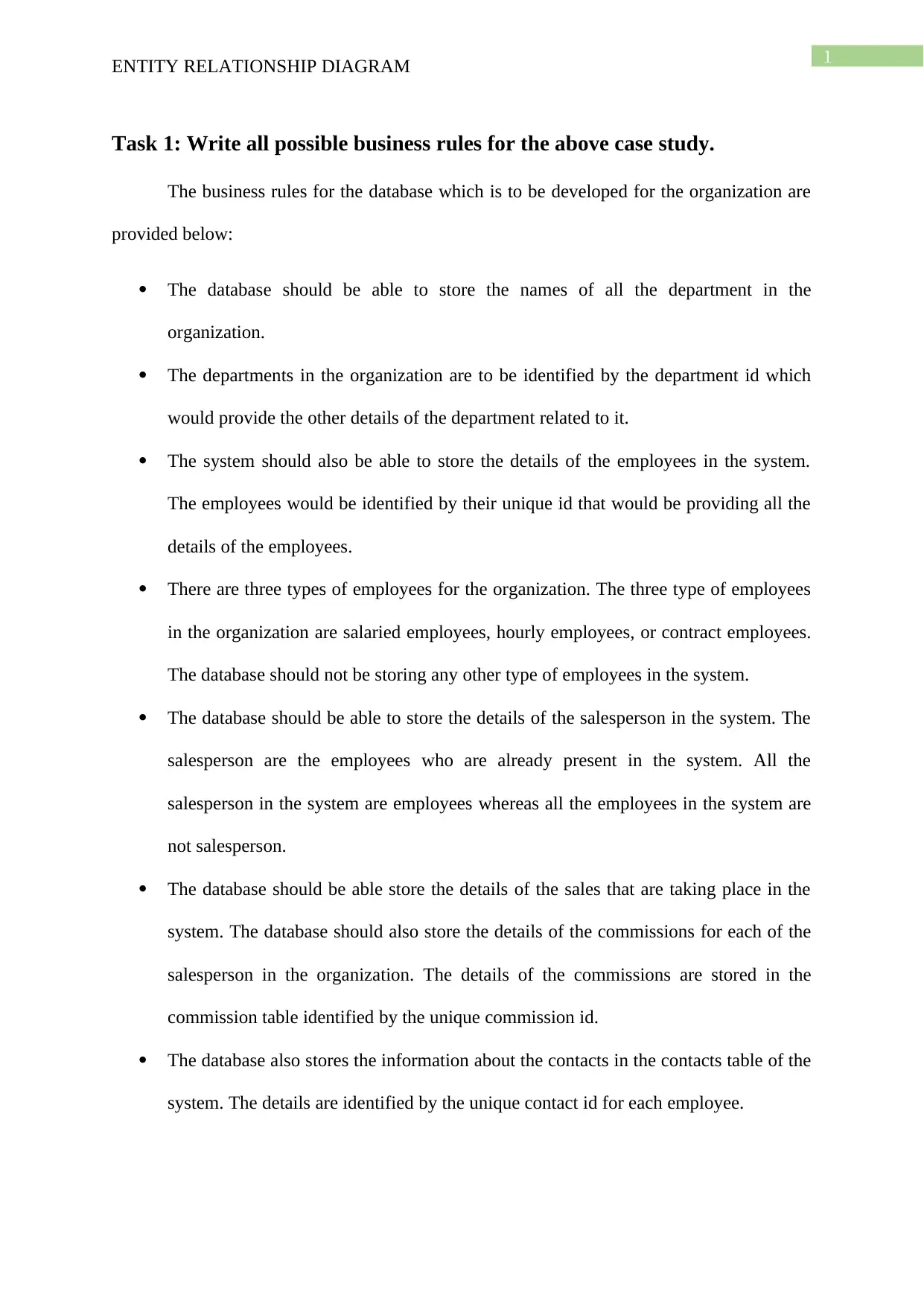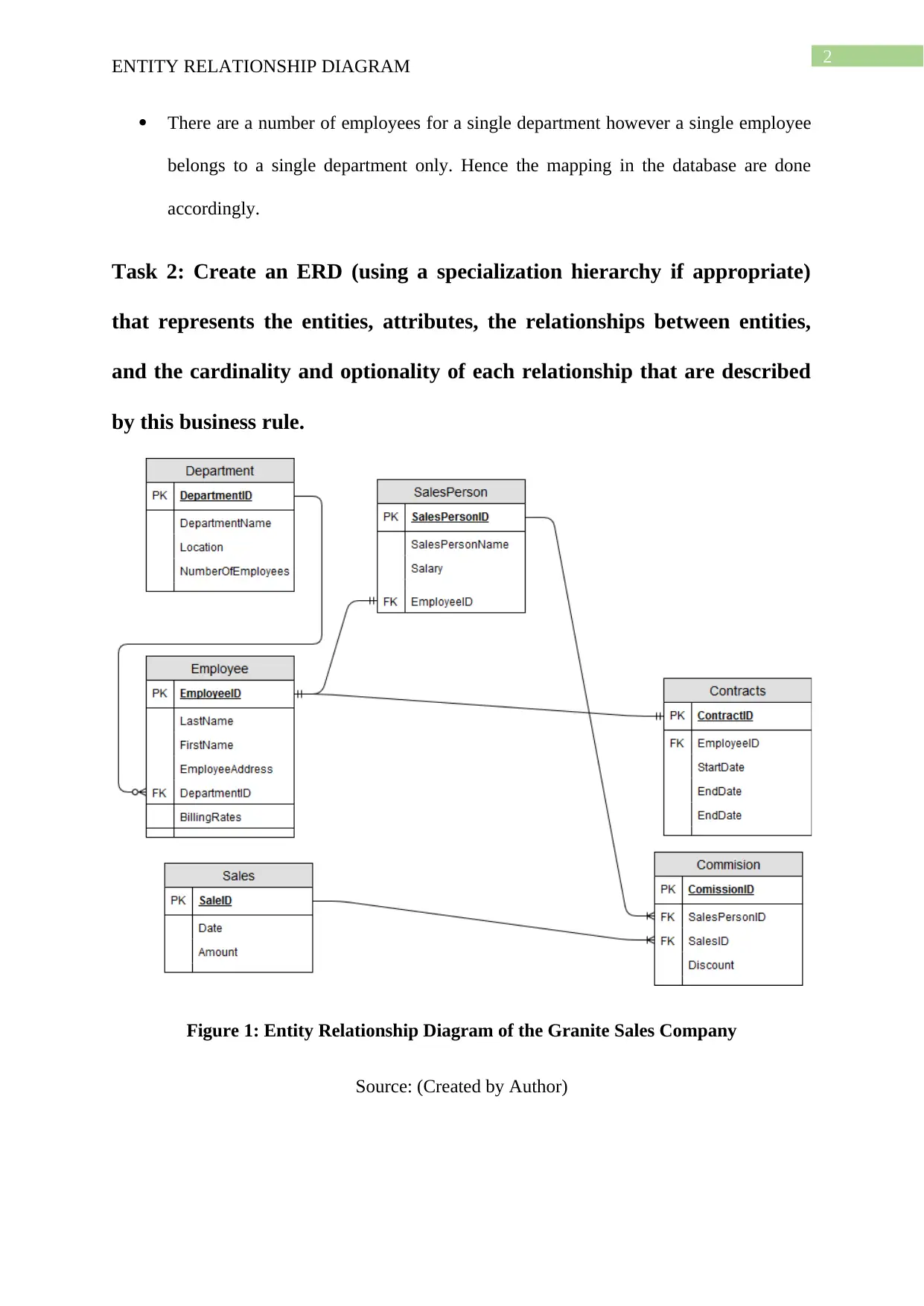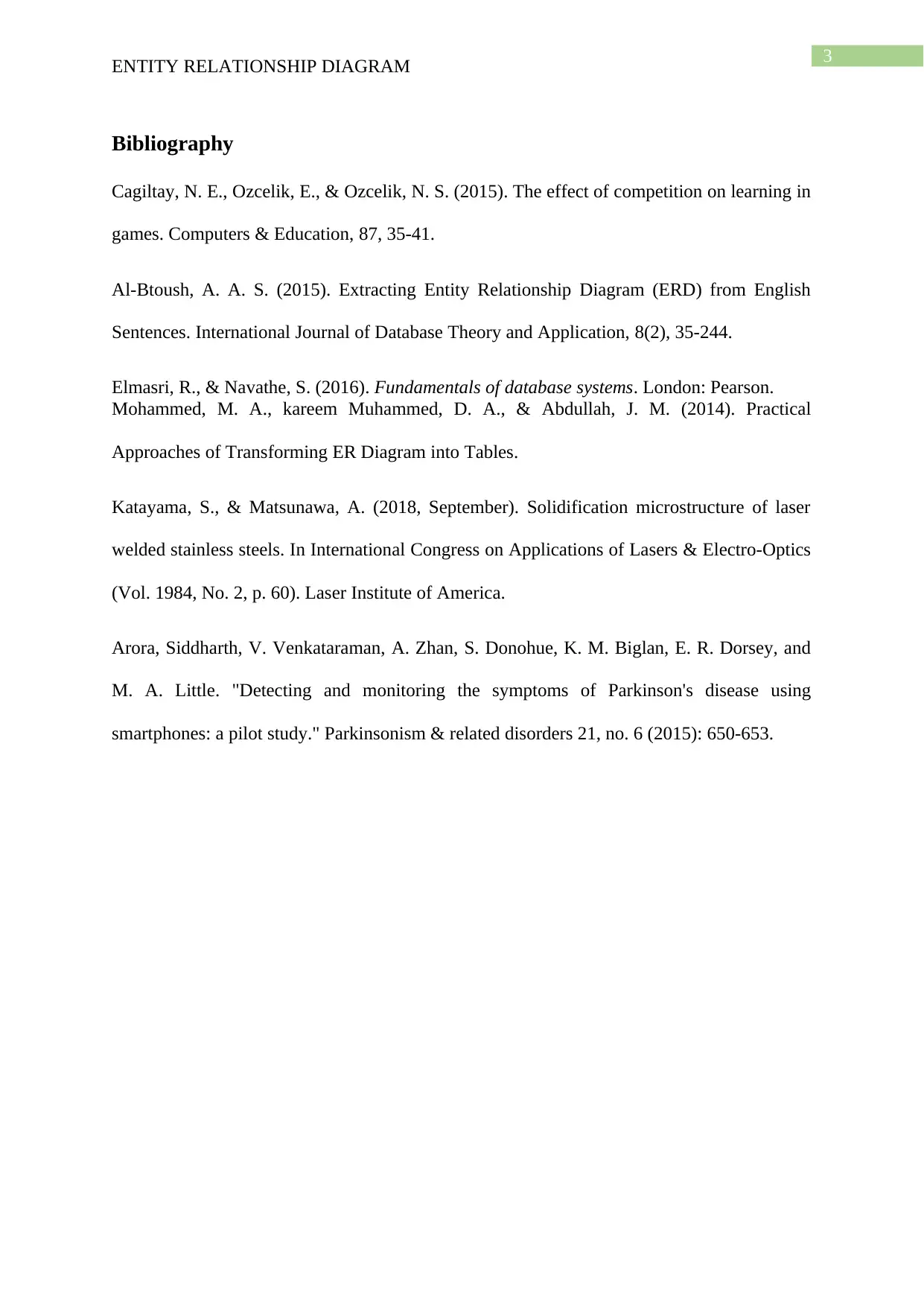Entity Relationship Diagram for Granite Sales Company Database
VerifiedAdded on 2023/04/19
|4
|654
|203
Project
AI Summary
This project focuses on designing a database for the Granite Sales Company using an Entity Relationship Diagram (ERD). The assignment begins with a detailed analysis of business rules, outlining the requirements for storing department and employee information, including different employee types (salaried, hourly, and contract) and salesperson details. It emphasizes the relationships between departments and employees, including cardinality and optionality. The core of the project involves creating an ERD that visually represents the entities, attributes, and relationships based on the provided business rules, potentially incorporating a specialization hierarchy. The final deliverable is a visual representation of the database structure, illustrating the data model for the Granite Sales Company. The solution includes a bibliography of supporting resources.
1 out of 4











![[object Object]](/_next/static/media/star-bottom.7253800d.svg)